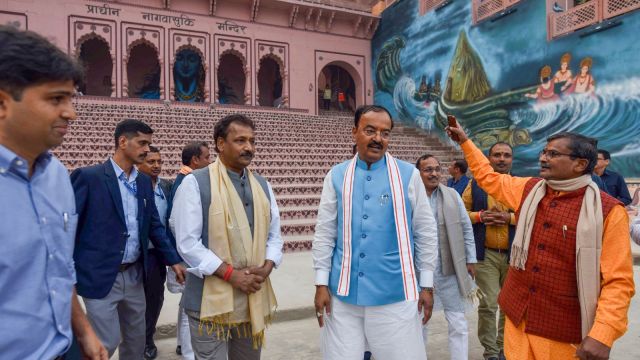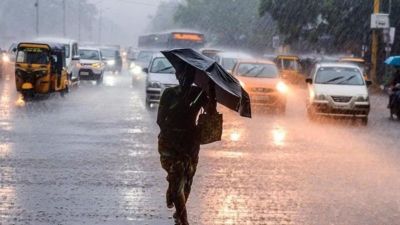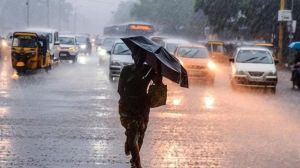UP govt lays out ‘Digital Kumbh’ experience for visitors
Initiative will involve AI-powered cameras, Google-assisted navigation & a chatbot; digital lost & found centre to be set up.
 Deputy Chief Minister Keshav Prasad Maurya reviews preparations for Kumbh Mela, in Prayagraj, Tuesday. (PTI)
Deputy Chief Minister Keshav Prasad Maurya reviews preparations for Kumbh Mela, in Prayagraj, Tuesday. (PTI)TO TACKLE a concern among people that has been long associated with the Kumbh Mela – that of getting lost during one of the largest religious gatherings, expected to be attended by around 40 crore people in January 2025 in Prayagraj, the Uttar Pradesh government, with the help of technical experts, is firming up an extensive “digitalisation” plan.
This is also aimed at providing a state-of-the-art “digital Kumbh” bath experience to visitors, officials said on Tuesday.
Also part of the plan will be Google-powered navigation of the Kumbh Mela area to Artificial Intelligence (AI)-powered cameras, which can recognise faces and a museum of “Digital Kumbh”, in which an attempt is being made to connect age-old tradition with modern technology, which would assist visitors as well as sadhus coming for the holy dip.
To test the initiative much before the actual baths start in January, a ‘digital lost and found centre’ will go live from December 1 and officials are at work to meet the deadline. Having tested the success of AI-powered cameras, now work is underway to install over 300 AI-enabled cameras across the Kumbh areas, which would not only monitor the crowd and provide surveillance but would also help reunite individuals lost in the massive crowd.
Having already collaborated with Google, the plan is to coordinate with other social media platforms, including Facebook and X, to provide information about missing person as well as helping in locating them.
“As part of the digital initiative, which would be the first such large-scale exercise, there would be Google-integrated navigation maps of the Maha Kumbh area, which would be spread in acres and divided into sectors.”
“Apart from that, Google-assisted navigation would also provide locations of ghats, temples, akharas and saints, assisting not just pilgrims but also saints and seers,” informed a senior official, adding that digital maps would also assist devotees in reaching the Sangam ghats for the holy bath. He informed that “instant recognition facility with AI-powered face recognition technology is also being put in place.”
A chatbot named “Kumbh Sahayak” is being developed for the event using AI technology, with the aim to act as a “personal guide” to the visitors. The target is to make the service available in over 10 languages including region as well as international as Kumbh would witness visitors not just from different parts of the country but also abroad. This chatbot would be connected with online navigation of the Maha Kumbh grounds and would also update visitors about the major events and places inside as well as outside Kumbh area.
The government is also investing over Rs 21 crore to build a “Digital Kumbh museum” in Prayagraj over 10,000 square metres with the capacity to accommodate around 2,500 visitors simultaneously at a time. The Digital Kumbh would have a gallery, which would showcase “14 gems of Samudra manthan” in detail. It will also offer glimpses into previous Kumbh Melas in Haridwar, Nashik and Ujjain. The idea is to provide an “interactive experience” showcasing the tradition and history associated with the Kumbh.







